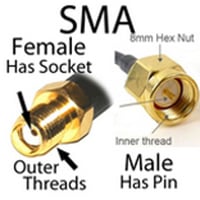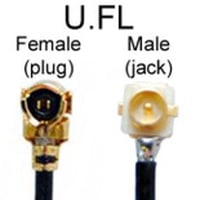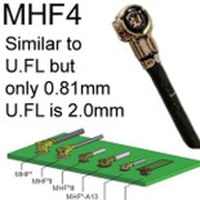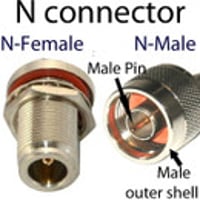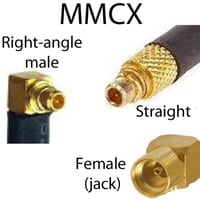RP-SMA Extension Cable: 60FT 70FT 80FT 90FT 100FT 110FT 120FT 130FT 140FT 150FT 160FT
- SKU:
- RSm60ftRSf
- Availability:
- In stock
- Weight:
- 5.29 LBS
Data Alliance
RP-SMA Extension Cable
Antenna Cable: RP-SMA Male to RP-SMA Female extender
- One end has an RP-SMA female right-angle connector, and the other has an RP-SMA male right-angle connector with a bulkhead nut and washer for mounting and weatherproofing.
- Choose between the length options above.
- Data Alliance's high-quality soldered terminations of RP-SMA connectors with soldering provide a low-loss connection with discontinuities kept to a minimum.
Cable type/thickness: 400-series coax is the same quality as LMR-400, with the same double-shielding characteristic and low signal loss.
- The LMR-400 -coaxial cable type has much lower attenuation (signal loss) than the LMR-200.
- The cables are rated for outdoor use and are also suitable for indoor use.
- The 400-series double-shielding enables low signal loss. This is a significant factor in the higher quality of Data Alliance's antenna cables, which translates into lower loss and better performance.

The temperature range for operational use of this 400-series coax and the cable assembly is -31 F ~ +203 F (-35 C ~ +95 C)
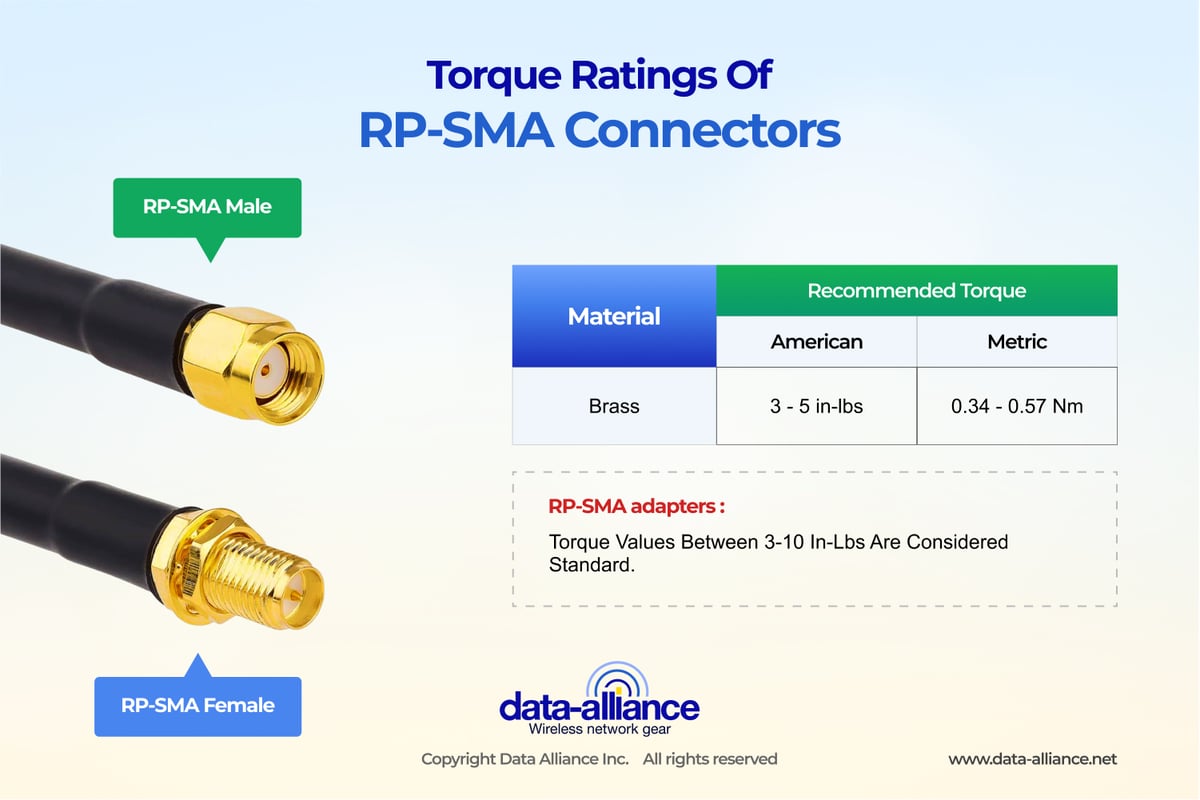
-
Compatibility with wireless standards and applications: Our RP-SMA extension cables' range of frequency band compatibility (from 0 to 18GHz), consistently low broadband VSWR, and impedance matching to 50 Ohm antennas and cables make them suitable and compliant for all the above applications.
- All WiFi standards: 2.4GHz and 5GHz applications: Wi-Fi 6, WiFi 6E, 802.11AX, 802.11AC, 802.11N, 802.11G, 802.11B, 802.11A
- Cellular Wireless LTE / 4G, GSM / 3G WiMax, 5G: Data and voice applications
- IoT wireless, automation, and machine-to-machine (M2M): Bluetooth, ZigBee, RFID, LoRa, LTE-m, and NB-IoT.
- Compatible with all Helium miners used in North America, including Bobcat miners, Sensecap miners, and all other Helium LongFi miners, as are all of our antenna cables and adapters with RP-SMA-male connectors
RoHS 3 and REACH compliant: Our antenna cables and RF adapters comply with RoHS 3 and REACH restrictions on lead content and other heavy metals and toxins.
- The RP-SMA male-to-female extension cable is easy and quick to install. The RP-SMA male connector fits the jack on many WiFi routers, and the RP-SMA female connector fits the male connector on antennas with an RP-SMA male connector. Most WiFi antennas with an RP-SMA connector have a male connector. The extension cable enables the antenna to be placed further from the router in the most suitable place for line of sight.
COMPATIBLE PRODUCTS:
Frequently Asked Questions
What are the insertion loss characteristics across varying lengths and frequencies?
Insertion loss increases with length and frequency. For instance, at 2.4 GHz, a 100 ft cable typically incurs around 10 dB loss. Detailed insertion loss charts for different frequencies and lengths are available in the cable's technical datasheet.
What is the maximum RF power these cables can handle?
These cables can generally handle RF power up to 50 watts. The exact power handling capacity varies with frequency and environmental conditions and should be confirmed from the manufacturer's specifications.
What are the flexibility parameters and minimum bend radius?
The cables exhibit high flexibility with a minimum bend radius of approximately 10 times the cable diameter, accommodating installations requiring significant maneuverability.
Describe the connectors used and their durability.
The cables are equipped with gold-plated RP-SMA connectors, which offer low-resistance connections and are rated for at least 500 mating cycles, ensuring long-term reliability and minimal signal loss.
What are best practices for installation to reduce signal degradation?
To minimize signal loss, avoid sharp bends and physical stress on the cable, ensure proper grounding, maintain clean connectors, and securely tighten connections. For outdoor use, employ weatherproofing measures to protect the cables. Details about antenna cable installation.
How does cable length impact signal quality in high-frequency applications?
Longer cables at high frequencies can lead to significant signal attenuation and noise. It is advisable to use the shortest possible cable length and, if necessary, implement signal amplifiers or repeaters to maintain signal quality.
What additional protective measures are recommended for outdoor installations?
Use conduits or protective sheathing to guard against UV exposure and physical damage, ensuring long-term durability and performance in outdoor environments.


